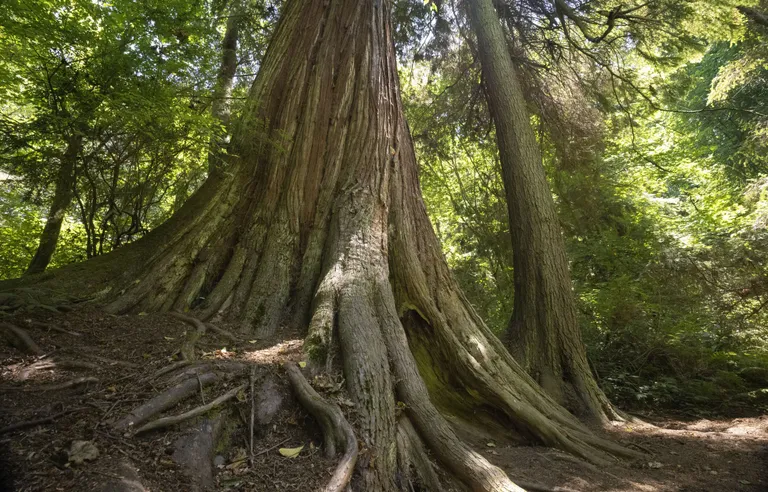The world has changed a lot in the 30 years following the timber wars, yet the same old rhetoric has not [“U.S. Forest Service needs to turn over a new leaf when it comes to old growth,” Sept. 24, Opinion]. This perpetual conflict is reflected in the U.S. Forest Service’s proposed National Old-Growth Amendment that will hinder, not help, efforts to conserve old-growth forests in these uncertain times.
Instead of directly addressing the primary threats to old-growth forests — severe wildfires, disease, insects and rapid climate impacts — this politically driven policy adds bureaucratic hurdles that will delay the very actions necessary to sustain forests of all ages.
Over the past two decades, nearly 700,000 acres of old-growth forests have been lost to devastating wildfires, according to Forest Service data. As today’s megafires grow larger and more intense, the need for timely and effective forest management has never been greater.
Unfortunately, this nationwide policy to amend 128 Forest Plans simultaneously will only exacerbate the federal government’s already cumbersome land management system. Projects that could mitigate severe fire risks often take years to get approved under the current framework. Micromanaging local public lands managers from Washington, D.C., will further slow the action that’s needed, putting more old-growth forests at risk.
According to a threat assessment by the Forest Service and the Bureau of Land Management, over 70% of mature and old-growth forests are at high risk of wildfire-caused mortality. Forests in wilderness areas — those protected from active management — have suffered greater losses of old-growth trees than forests where limited timber harvesting and other forms of active management like prescribed fires are allowed.
Active, science-based stewardship is crucial to protecting these forests. In areas where active management has been implemented, the data suggest old-growth forests have increased. This shows that careful and strategic timber harvesting, among other methods, is an important conservation tool.
Unfortunately, the proposed amendment is focused more on process than results. The Forest Service should focus on identifying and removing the existing barriers that prevent effective forest management and delay on-the-ground action. The situation is urgent. Wildfires do not wait for regulatory approval, and the longer we delay, the more our old-growth forests are put at risk.
That’s why it’s hard to reconcile the amendment with the Forest Service’s own Wildfire Crisis Strategy. That plan aims to accelerate and expand proactive forest health treatments, protect communities from the dangers of wildfire and reduce the harmful smoke and carbon emissions that come with massive forest fires. If the Forest Service’s limited resources were allocated toward implementing this strategy, the benefits would be far more substantial than those offered by the National Old-Growth Amendment. Instead of new regulations, we need to empower our public lands managers to act quickly and effectively, based on conditions on the ground, and in line with local Forest Plans that are guided by science and informed with public input.
Another significant concern is the duplication of policies in certain regions, particularly the Pacific Northwest. The Northwest Forest Plan, which was born out of the timber wars, already provides strong protections for old-growth forests. However, some groups continue to push for more restrictions, seemingly fixated on the conflicts of the past.
The timber industry has moved on from the timber wars. It no longer seeks, nor is it equipped to harvest and process the biggest and oldest trees to make the products we all use every day. Today’s industry is focused on maintaining the region’s leadership in advanced forestry and manufacturing green building products that store carbon for generations. Without healthy forests, there is no timber industry.
If we truly care about the future of our old-growth forests, we must prioritize action over process. Time is running out, and we cannot afford to let these landscapes go up in smoke. Unfortunately, this amendment makes active stewardship more difficult.
https://www.seattletimes.com/opinion/sustaining-old-growth-requires-active-stewardship/
